NASA Reports: K2-141b: The Infernal Exoplanet with Lava Oceans and Rock Rain
Exoplanets, those captivating worlds orbiting distant stars beyond our solar system, continually astound us with their astonishing diversity. Among these celestial curiosities is K2-141b, a planet so extraordinary that it defies imagination. On this remote exoplanet, the oceans are molten lava, the skies teem with vaporized rocks, and it rains down rocky hailstorms. Despite its distant location, the peculiar nature of K2-141b has piqued the curiosity of astronomers and space enthusiasts alike.
A World of Extremes:
K2-141b's uniqueness lies not only in its otherworldly features but also in how we've come to know about it. Unlike planets within our solar system, we lack actual images of this enigmatic world. Instead, its existence has been unveiled through an ingenious trick of celestial light. As K2-141b transits in front of its host star, it causes a minute dip in the star's brightness observable from Earth. With the precision of powerful instruments such as the Kepler Space Telescope, astronomers have deciphered essential details about this planet, including its size, mass, and distance from its parent star.
Remarkable Proportions:
What sets K2-141b apart is its uncanny resemblance to Earth in terms of size, being only about 50% larger. However, it differs significantly in mass, cramming five times the Earth's mass within its volume. This disparity contributes to the planet's exceptional characteristics.
Perilously Close Orbit:
One of the defining features of K2-141b is its perilously close orbit around its parent star, positioned merely one million kilometers away. This proximity equates to a mere 0.74% of the distance that Earth orbits the Sun. This proximity has profound implications for the planet's climate and conditions, resulting in a stark duality of environments.
Scorching Days and Eternal Nights:
K2-141b's close proximity to its star makes it blisteringly hot on its dayside, where temperatures soar to a scorching 5,500 degrees Fahrenheit. On the flip side, its likelihood of being tidally locked means that one side perpetually faces the star, much like the Moon's eternal bond with Earth. Consequently, the nightside plunges into an everlasting abyss of chilling cold, dropping to a bone-chilling 328 degrees below zero.
An Extreme Planetary Laboratory:
Scientists have harnessed these extreme conditions to model K2-141b's atmosphere and geology. The results paint a vivid picture of a planet in turmoil. The dayside, scorched to the point where rocks melt into molten lava, presents a turbulent, chaotic surface. On the flip side, the nightside enjoys relative normalcy, with rocky terrain.
The Dance of Elements:
However, it's the boundary between these extremes that sparks intrigue. To bridge the gap between searing heat and icy cold, K2-141b hosts a colossal flow of heat, where vast currents of molten lava oceans traverse the planet, creating a mesmerizing, cyclical dance of heating and cooling.
Vaporized Rocks and Hailstorms:
The intense heat on the dayside vaporizes rocks, forming an atmosphere composed not of conventional air but of vaporized minerals. These microscopic particles are ferried by hurricane-like winds to the nightside, where they condense and descend in an unending hailstorm of pebbles.
Conclusion:
K2-141b, with its stark environmental contrasts and alien landscapes, stands as a testament to the astonishing diversity of exoplanets that pepper our galaxy. While it remains a distant and inhospitable realm, this infernal world offers invaluable insights into the extremes of planetary conditions. It serves as a striking reminder of the marvels that await discovery among the countless exoplanets adorning the cosmos, all from the safe vantage point of our Earthly home.
-
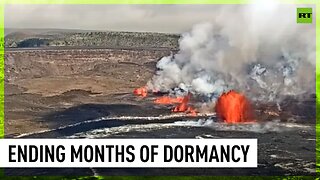 0:37
0:37
RT
8 months agoKilauea volcano spews fountains of lava
5.9K4 -
 8:50
8:50
DOBSONIAN POWER - ASTRONOMY FOR ALL
8 months agoWhat are HYCEAN Planets? (Exoplanet K2-18b)
12 -
 39:59
39:59
biteszHQ
1 year agoThe Earth’s magma ocean solidified faster than thought | SpaceTime | Astronomy News
14 -
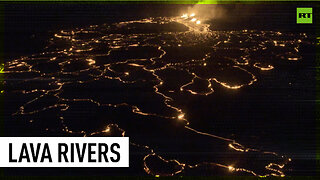 0:59
0:59
RT
8 months agoKilauea volcano spews lava fountains
3.54K6 -
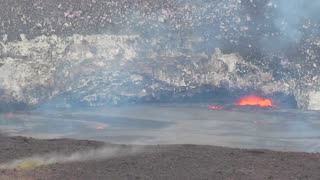 4:20
4:20
DocumentariesBrainFood
1 year agoLava Overflows Onto Halema‘uma‘u Crater Floor Hawaiʻi Volcanoes
13 -
 12:10
12:10
Truth Unknown
8 months agoThe Cataclysmic Origins of Chevron Deposits: Unraveling the Planet's Scars
392 -
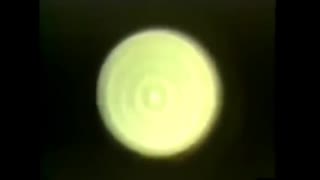 16:55
16:55
VvL3M3vV
1 year agoThe truth about celestial bodies in the waters above
96 -
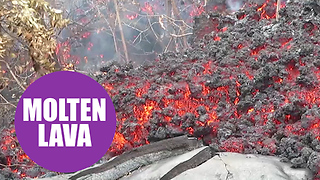 1:20
1:20
SWNS
6 years agoGeologists collecting lava from inside live volcanoes
203 -
 1:26
1:26
RT
2 years agoLa Palma volcano’s lava creates molten rock tongue as it hits the ocean
842 -
 1:11
1:11
Last World News Channel
1 year agoMauna Loa Lava Flow Will Last For Weeks, Scientist Says
3